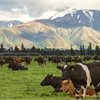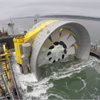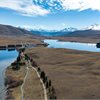Why I’m in a coal bucket
4 Aug 2025
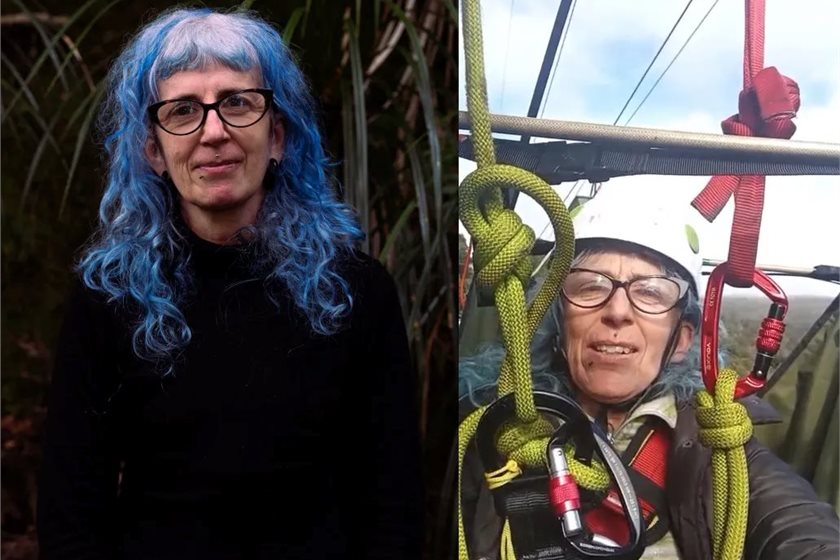
By Rach Andrews
OPINION: People might wonder why a 53-year-old grandmother would choose to climb into a 80 metre high stinky coal bucket on the rainy West Coast and settle in for the long haul.
The truth is, I had no hesitation in taking this action, because we have just so much to lose. Everything that we love and treasure is on the line now. Continued denial about how dire the climate situation is, and continued delay from governments and corporations on taking decisive and bold action to reduce climate-heating greenhouse gas emissions have us on an ecocidal highway to hell.
I was up on the Denniston Plateau with 70 other climate protectors over Easter weekend this year. It’s hard to come away from an environment like that unmoved by its stark beauty. It’s impossible not to be awed by the tenacity of life forms that have adapted to thrive in such harsh conditions. But they have – life is abundant there. Unique, rare and beautiful. The Denniston Plateau is a 40 million-year-old landscape that Bathurst Resources and the New Zealand government are willing to destroy. And once it’s destroyed no amount of “rehabilitation” can bring it back.
With the help of new “fast-track” legislation, Bathurst hopes to export 20 million tonnes of coking coal from one of the most ecologically unique landscapes in Aotearoa. The size of the proposed mine is difficult to comprehend; roughly the size of Nelson city. It will emit 53 million tonnes of carbon pollution, equivalent to New Zealand’s entire annual emissions. According to a Nature journal article on the mortality cost of carbon, that amount of pollution is likely to cause over 10,000 excess deaths globally.
I know many of you reading this are thinking – what’s the point of stopping one mine when the whole system seems broken? I’ve felt that paralysis too, scrolling through climate news feeling smaller and more helpless with each headline. But here’s what I’ve learned from being up here: this isn’t just about one mine.
Denniston is a critical test case. It’s about whether we can build the power to stop any of them. Every victory creates precedent, builds networks, and proves it’s possible. When people said “why save Manapouri when there are dams everywhere?” they didn’t know they were starting a movement that would transform how we think about rivers. When anti-nuclear activists focused on single reactors, they didn’t know they were building the power to shut down entire programs.
Bathurst Resources and other companies who are in the process of making applications through the fast-track process should know that they will face opposition like they haven’t seen before. We can’t continue on this murderous, extractivist pathway if we want to leave a habitable planet for our grandchildren and their grandchildren. Short term growth is quite literally killing us and everything else along with us.
The area they want to mine at Denniston isn’t a wasteland. It’s teeming with life that we’re only just beginning to understand. Great spotted kiwi, giant snails, green geckos, and delicate lichens cling to sandstone boulders millions of years old. If this mine goes ahead, all of that – plants, birds, reptiles, and the quiet stories they carry – will be bulldozed, blasted, and buried. In their place: a new road for mining trucks, a coal washing plant, and the kind of devastation we already see at nearby Stockton, where even freshwater insects can no longer survive.
And for what? Less than 1% of Bathurst’s revenue goes back to the region. Fewer than 10% of its profits stay in Aotearoa. In exchange, locals get a few insecure jobs, toxic runoff, and housing shortages as contractors are squeezed into prefab dorms. The rest of us inherit the emissions. The floods. The fires.
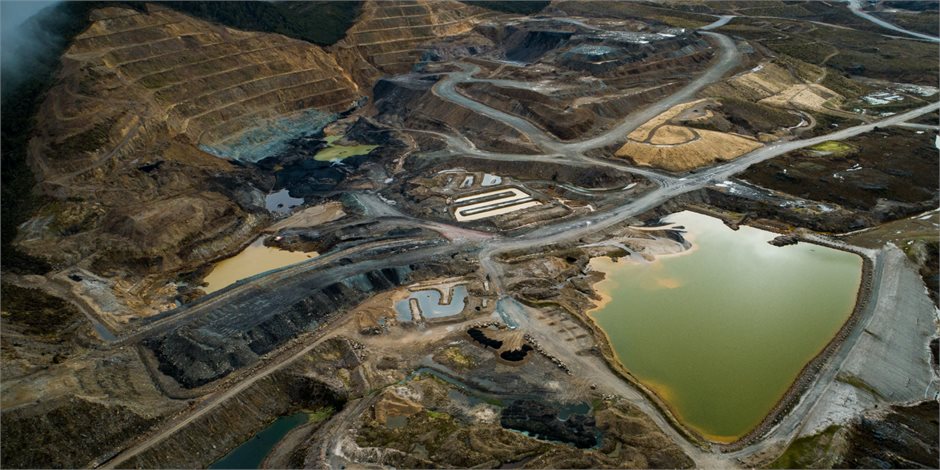 |
| Stockton Mine IMAGE: Forest & Bird/Neil Silverwood |
This isn’t a fair trade. It’s a theft of land, of our future, and of any honest claim that we’re addressing the climate crisis. We’ve known for decades that coal is the dirtiest fossil fuel, contributing more to global heating than any other energy source. Burning it releases sulphur, mercury, and fine particulate matter – airborne toxins linked to thousands of premature deaths in Aotearoa each year. And yet we continue to mine, to export, and even to subsidise it.
The companies are counting on us feeling hopeless and isolated. They want us scrolling through climate doom at home instead of linking arms with neighbors. But I’ve seen what happens when people who care finally meet each other – the energy is electric. The relief of discovering you’re not alone in this fight is overwhelming.
So here I am, in this cold, wet coal bucket and I’ll stay for as long as I can. Not because I want to, but because when my beautiful grandchildren are old enough to understand and they ask me “Nana Rach, how did people stand by and watch all this loss and destruction happen?” I’ll be able to hold their gaze and tell them that I took a stand and I did everything I possibly could to reduce the harmful greed of capitalism.
The coal bucket is cold and uncomfortable, but the community keeping me here is warm. And that community is growing every day.
Rach Andrews, spokesperson for Climate Liberation Aotearoa, is now into the eighth continuous day of protest at the Stockton coal mine on the West Coast of Te Waipounamu. This is her second time protesting at the mine, and she is breaking bail conditions by protesting at the mine again. Last week Bathurst Resources announced that it was forced to truck coal from its Stockton mine as Andrews and another protestor continue to occupy the mine’s aerial ropeway, preventing coal from leaving the mine via the usual route.
UPDATED: Monday 4 August 6:05 pm. Edited to correct the number of excess deaths estimated globally due to potential emissions from a coal mine at Denniston. The number is 10,000 excess deaths, not 100,000 as previously stated.
print this story


